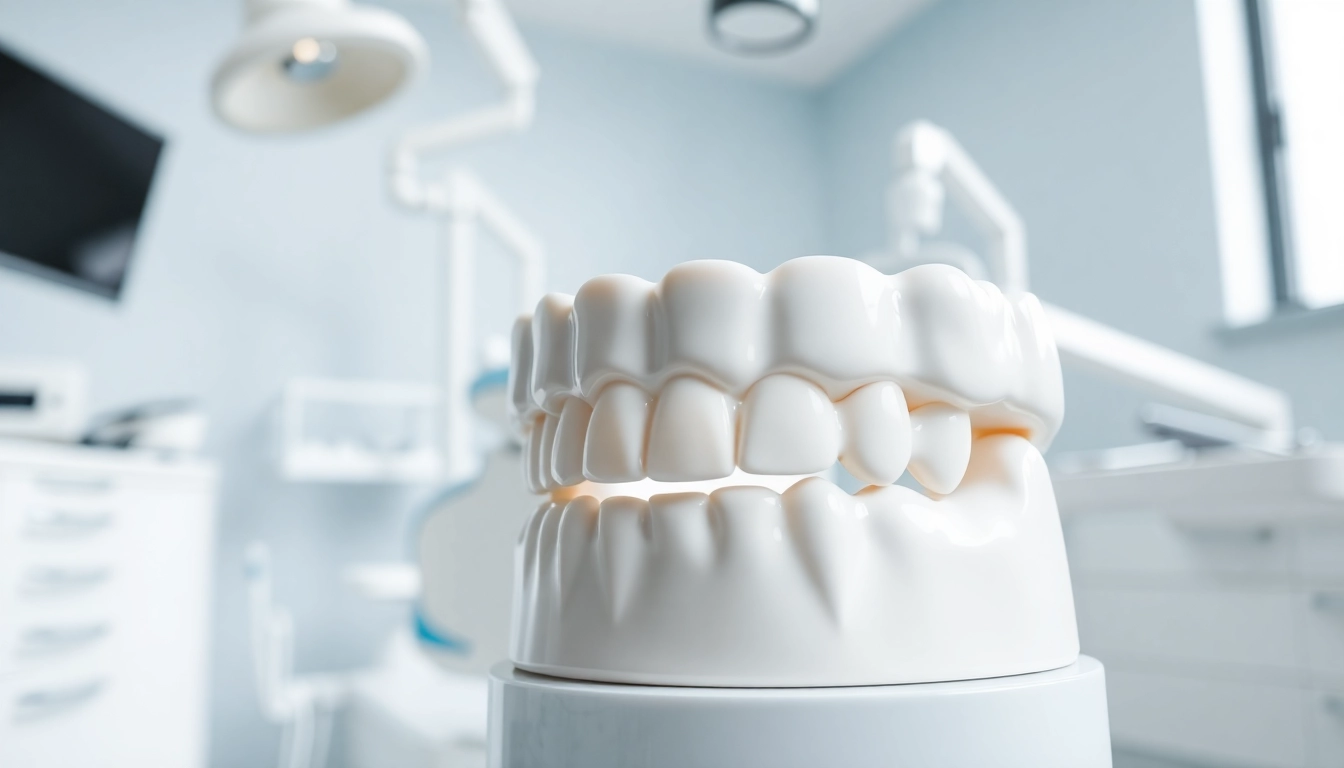Understanding Nootropics: The Basics
What Are Nootropics?
Nootropics, often referred to as “smart drugs,” are substances that promise to enhance cognitive function, particularly executive functions, memory, creativity, or motivation, in healthy individuals. The term originates from the Greek words “nous,” meaning mind or intellect, and “tropein,” meaning to turn or steer. These cognitive enhancers can range from natural herbs and dietary supplements to synthetic compounds that target various brain functions. A key feature of nootropics is their purported ability to provide cognitive benefits without significant side effects, making them appealing for students, professionals, and anyone seeking to optimize their mental performance. For more insights into the different forms of nootropics, you may want to check out Nootropics.
How Nootropics Affect Brain Function
The brain is a highly complex organ, and its function can be influenced by various factors, including neurotransmitter levels, blood flow, and neuroplasticity. Nootropics operate mainly by enhancing the availability of these neurotransmitters or by improving neuroplasticity—the brain’s ability to reorganize itself by forming new neural connections. Some nootropics may increase dopamine production, improving mood and motivation, while others might enhance acetylcholine levels, boosting memory and learning capabilities. The net effect varies depending on the individual and the specific nootropic used, which is why understanding their mechanisms of action is fundamental when considering their use.
Common Types of Nootropics Available
Nootropics can be broadly classified into three categories: natural, synthetic, and prescription nootropics. Natural nootropics, such as ginkgo biloba, bacopa monnieri, and Rhodiola rosea, have been used for centuries in traditional medicine. Synthetic nootropics, like racetams (e.g., piracetam and aniracetam), are modern compounds engineered to enhance cognitive functions. Prescription nootropics, such as Adderall or Modafinil, are designed to treat conditions like ADHD and narcolepsy but are often misused for their cognitive-enhancing properties among healthy individuals. Understanding the distinctions and unique benefits of these categories can help users make informed decisions about which nootropic aligns with their goals.
The Science Behind Nootropics
Research Supporting Nootropic Use
Numerous studies investigate the efficacy of various nootropics. Research has shown that some natural compounds can enhance cognitive performance. For instance, studies on bacopa monnieri suggest it may improve memory recall and cognitive processing speed in healthy individuals. Other research indicates that substances like L-Theanine, often found in tea, can promote relaxation and improve focus when paired with caffeine. Despite promising results, it is crucial to approach nootropic usage with critical thinking, considering the variability in individual response and potential long-term effects.
Mechanisms of Action in the Brain
Understanding how nootropics work requires diving into the biochemistry of the brain. Many nootropics modulate neurotransmitter levels, influencing mood, focus, and cognitive function. For example, racetams like piracetam are known to enhance cognitive function by promoting the release of acetylcholine, a vital neurotransmitter associated with memory and learning. Others, like modafinil, increase dopamine concentrations, which can lead to heightened awareness and improved attention. The mechanism through which each nootropic works is critical for tailoring individual usage and achieving desired cognitive outcomes.
Potential Risks and Side Effects
While nootropics offer exciting possibilities for cognitive enhancement, they are not without risks. Some individuals may experience undesirable side effects, including headaches, anxiety, insomnia, or digestive issues. Prescription nootropics carry a risk of dependence and withdrawal symptoms. Natural nootropics, while generally safer, can interact with other medications or lead to unexpected side effects in sensitive individuals. Therefore, being well-informed about potential risks is essential to ensure safe usage.
Choosing the Right Nootropics for Your Needs
Factors to Consider When Selecting Nootropics
Selecting the appropriate nootropic involves gauging personal cognitive goals, lifestyle factors, and existing health conditions. Consideration of individual goals is crucial: are you looking to boost memory for studying, improve focus for work, or enhance creativity? Furthermore, personal health conditions such as anxiety, depression, or sleep disorders can dictate which nootropic might be safe or effective. Additionally, understanding how your body metabolizes certain compounds is vital for ensuring optimal experiences with nootropics.
Personalizing Your Nootropic Stack
Creating a personalized nootropic stack can optimize cognitive enhancement. A stack refers to the combination of nootropics taken together to amplify their effects. For instance, combining caffeine, known for its stimulatory effects, with L-Theanine, an amino acid that can soothe anxiety, can balance their effects, allowing for enhanced focus without jitters. Keeping a journal during the experimentation phase helps track which combinations yield the best results, enabling ongoing adjustments to support evolving cognitive needs.
Consulting with Healthcare Professionals
Before starting any nootropic regimen, consulting with a healthcare professional is highly advisable, especially for those with underlying health conditions or those taking medication. Healthcare providers can offer insights into safe dosages, potential interactions, and compatibility with existing treatment plans. Their guidance can lead to more informed choices and reduce the risk of adverse effects.
Best Practices for Nootropic Usage
Dosage Guidelines for Various Nootropics
Dosage is critical when it comes to nootropic effectiveness. Each substance may have an optimal dosage range, with variations based on individual tolerance and reactions. For example, common doses for caffeine might be around 100-400 mg per day, while some racetams are typically dosed at 800-2400 mg divided throughout the day. Following manufacturer guidelines, conducting personal research, and starting with lower doses can help avoid adverse effects while finding the sweet spot for cognitive enhancement.
Timing and Cycling Your Nootropics
Timing can greatly affect the efficacy of nootropic usage. Some compounds may work better in the morning, such as stimulants that can enhance alertness throughout the day, while others may be ideal for enhancing focus during late-night study sessions. Moreover, cycling nootropics—taking them for a certain period, followed by a break—can prevent tolerance buildup and maintain their effectiveness. For instance, using a particular nootropic for 5 days followed by a 2-day break can optimize cognitive benefits while minimizing side effects.
Pairing Nootropics with Lifestyle Choices
The effects of nootropics can be significantly enhanced when paired with healthy lifestyle choices. Regular physical exercise, proper nutrition, adequate hydration, and sufficient sleep are fundamental to optimizing brain health and cognitive performance. For instance, pairing nootropic use with regular aerobic exercise can further enhance mood and cognitive function, synergizing the effects for greater productivity. It’s essential to remember that nootropics are most effective when integrated into a balanced lifestyle rather than relied upon solely to achieve cognitive goals.
Measuring Your Nootropic Effectiveness
Tracking Cognitive Performance Improvements
Measuring the effectiveness of nootropic usage can be assessed through various cognitive performance metrics. Simple tools include standardized tests that assess memory, focus, and overall cognitive abilities. Tracking daily performance through journaling can help pinpoint when cognitive improvements occur in relation to nootropic intake. While self-reported cognitive enhancement is an important metric, standardized testing can provide a more objective measure of effectiveness over time.
Feedback from Personal Experience and Journals
Personal experimentation plays a crucial role in finding the right nootropic regimen. Keeping detailed journals of experiences—what combinations were used, the timing, doses, and perceived effectiveness—can guide future decisions and adjustments. This personal feedback loop enables individuals to identify patterns and correlations between nootropic use and cognitive performance, promoting a more personalized approach to enhancement.
Adapting Your Approach Based on Results
The final key to effective nootropic usage lies in adaptability. As cognitive needs evolve, reviewing and modifying your nootropic regimen to meet those changing requirements can ensure ongoing benefits. If specific stacks prove ineffective, experimenting with new combinations or different nootropics can provide renewed results. The goal is not only to enhance cognition but also to cultivate awareness of how these substances affect your unique cognitive profile over time.



